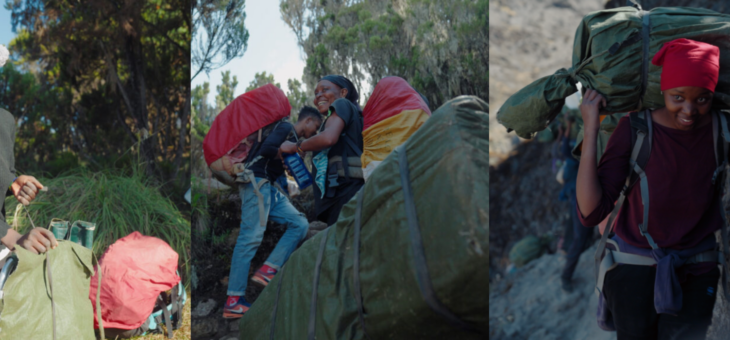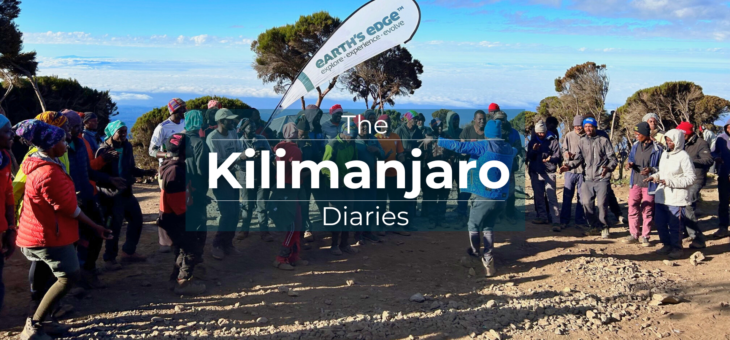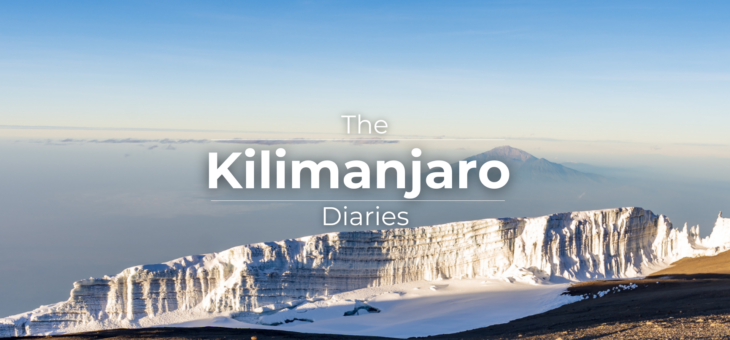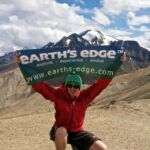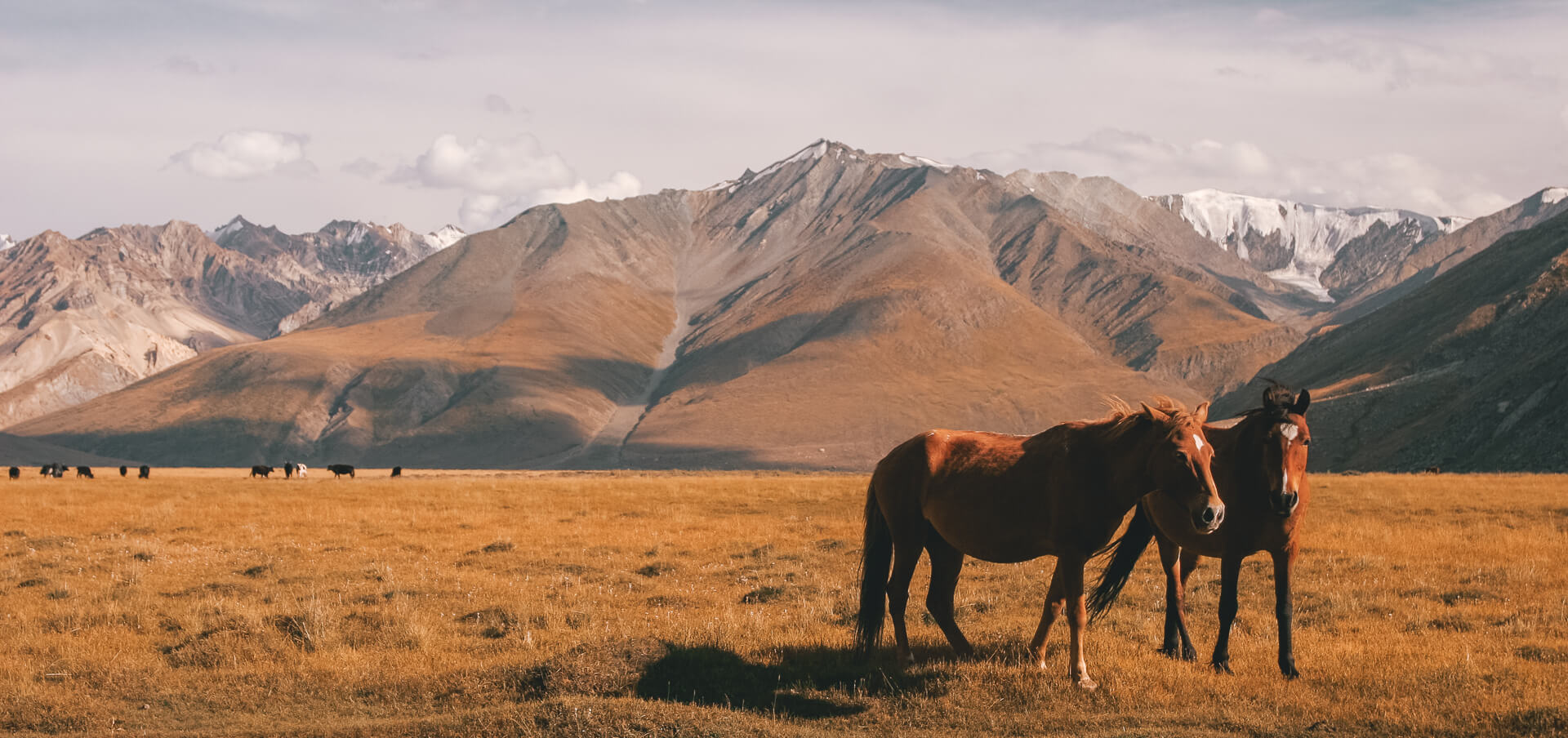Alan Kenny is a co-owner of Fitness4Life Ireland, an online training and nutrition company for women. He travelled with us to Kilimanjaro in 2015 and recently returned from bringing a team of clients to Everest Base Camp in May 2017.
A couple of hundred metres below the summit of Mount Kilimanjaro, trying to take in whatever oxygen I could from the increasingly thinning air, I wondered to myself; “What the hell am I doing here?”. Only bobbing head torches lit the trail. It was 4am and -25 degrees Celsius. We had just spent 6 days trekking, each day colder and more challenging than the last, to get to this point. The end was close in sight, but my heavy legs felt each and every step.

Before this trip to the Roof of Africa, I had absolutely no interest in hiking. I naively thought it to be a sport for the older and less fit than myself. However, as I grimaced through the last dark hours, I realised how wrong I was. I was tested both mentally and physically every step of the trek. In many ways, I prepared myself well through physical training. But nothing in the gym or on a short-day hike can truly prepare you for a week-long slog at altitude.
Before we get into it, I’d like to give you a quick background as to how and when I got started with trekking over the last number of years. I always had the perception that trekking was a mundane activity which you did when you got older. My only major climbing or trekking experience back then had been a (failed) drunken attempt at Croagh Patrick after a wedding – as that’s what my parents and their friends had done many years ago!
I work in physical performance and elite sports and always played team sports growing up. I’d consider myself quite a competitive person which can be both positive and detrimental. In my line of work, it can be challenging to commit to team sports as the hours usually collide with typical training times. This led to me looking for other ways to satisfy a competitive nature. I competed in various fitness challenges or races over the years, but nothing too major. A trip to Killarney with friends included a last-minute hike up Carrauntoohil just to see if we could!
I started to get a real thirst for a physical challenge and enjoyed testing myself in different ways. I also started to travel more over the last number of years, so when I stumbled across the Earth’s Edge website, something inside me clicked. I saw the Mount Kilimanjaro trip and straight away I knew I had to do it. I did some quick research there and then, found out that it was doable with no real climbing experience and I was sold on it. I saw it as an opportunity to see a new country, a new continent and a chance to test myself both mentally and physically.

Physical Benefits
Our bodies are designed to walk. Our anatomical structure means trekking is one of the best ways we can use our bodies while enjoying new surroundings. However, our modern lifestyle of sitting in cars and at a desk for 40 hours a week counters our natural design. Many of us are unfamiliar with using our physical strength and could benefit greatly from simply walking in nature more often. The physical benefits of trekking are numerous. Even just having something to train towards and aim for keeps people more accountable and disciplined with their training.
Fat Loss
An hour of hiking will burn upwards of 500 calories. This number will vary depending on the intensity and duration of the activity. Burning all of this energy is a great way to promote fat loss. When combined with correct nutrition practices, low-level intensity hiking will encourage your body to rely on fat as the dominant fuel source. This is majorly beneficial for the waistline.
Aerobic Endurance
Trekking is a great way to build up both aerobic and muscular endurance. Aerobic endurance is our ability to sustain physical activity over longer periods of time. There aren’t many other activities that get the heart going and keep it going for a long time like trekking. We become more efficient at these heart rates and intensity levels. This crosses over into everything else we do. We become fitter. Our muscles that we use when trekking also adapt and change based on the trekking we do. With training and nutrition, we can ensure that our leg muscles become better equipped to deal with the repetitive load we put on them.

Mental Benefits
Not only is a trek like this physically demanding. The mental challenges are just as prevalent. Tasks that seem mundane and simple, become torturous. My least favourite job during the trek was stuffing my precious sleeping blanket into its cover each morning. I didn’t learn until later that my technique was totally wrong and energy consuming. Also, just holding a conversation while walking at a moderate pace became a challenge the higher we went.
Now these challenges are in no way intended to deter you from making the decision to go on a trip of a lifetime with Earth’s Edge. In fact, I hope it will do the opposite. Even though the days felt gruellingly long, the camaraderie among fellow hikers was incomparable. We lifted each other’s spirits and kept each other motivated during the more challenging times.
Digital Detox
In today’s society more than ever, we are constantly consumed by updates, notifications and information. I firmly believe that we are not designed or evolved in a way yet to cope with the constant intake of digital messages. Losing yourself in a hike and marching through the wild, everything else becomes irrelevant. There’s something about being in nature that puts everything in perspective. You care less for the likes and comments you get and more for your surroundings. A multi-day hike is best for this but even getting away from technology for a few hours is beneficial.
Mind-Body Connection
Mindfulness and meditation are two phrases used with increasing regularity. They aren’t for everyone and the common perception of meditation is sitting alone in a room humming. However, when we look at the definitions of these words, they become a lot less daunting.
Mindfulness: ‘A mental state achieved by focusing one’s awareness on the present moment, while calmly acknowledging and accepting one’s feelings, thoughts, and bodily sensations, used as a therapeutic technique.’ Call it what you want but this connection between the body and mind is one of the most powerful ways we can promote positive mental and physical health. The actual act of trekking ensures that you focus on the task at hand. When you are working towards a destination, watching where you step, your mind doesn’t wander, it focuses only on the present.

Achieving
Besides the physical and mental benefits of trekking, I started to achieve something. I wanted to summit Kilimanjaro and I’ve wanted to get to the end point of every trek since. Sure, it’s the experience that counts, but I’d be lying if I said I wouldn’t be disappointed had I not made the summit. This act of challenging yourself is good for you. It’s good to be uncomfortable, to doubt yourself and have a fear of failing. If you never test yourself, you’ll never really know what you are capable of. The funny thing about trekking is that everything you learn can be applied to your everyday life. Setting a target, training, pushing yourself and believing in yourself are all positive behaviours that can be used in day to day situations. That conversation you’ve been putting off with your landlord becomes a little less daunting when you’ve come out the other side of an Earth’s Edge trek!
Pre-Trek
There are going to be moments on your trek that will be incredibly tough, no matter how much training you have done. From my experience, the training leading up to a trek serves mainly to make it that little bit easier. Unfortunately, no amount of training will make it easy, but improved fitness levels will make it far more enjoyable. The two biggest things to focus on during your training is actual trekking and reducing weight to within a healthy range. Carrying an extra kilogram of body weight will add up if you are walking for 8 hours a day. In terms of training, the best experience will be getting out trekking, no matter how long or how far, getting out and about is where your body will adapt. It is very hard to replicate trekking in a gym. Step machines and incline walking on treadmills can be beneficial if you have no other available options. In terms of muscular movements, squats, deadlifts and focusing on lower body movements are key to building up your strength & stamina.
So, if you’re sitting at home and considering a trip, I’d urge you to give it a go. I promise you that the memories of barely being able to breathe and dealing with extreme cold, fade faster than the memories of the sights you’ll see, the friendships made and that feeling of accomplishment.
If you are interested in joining us on our Kilimanjaro climb or Everest Base Camp trek, contact us today!

